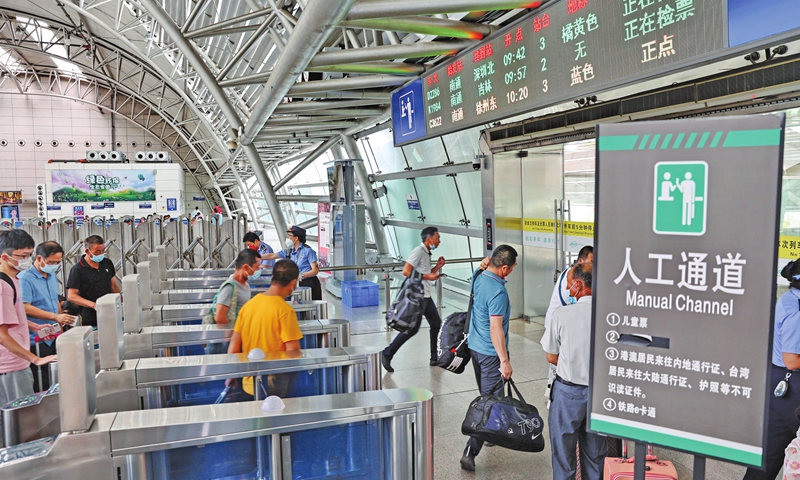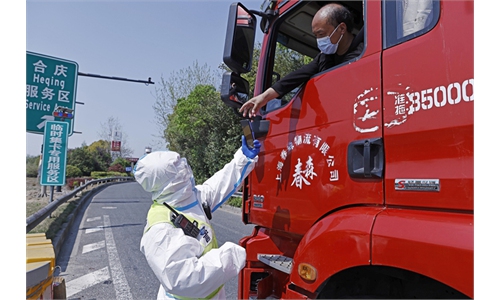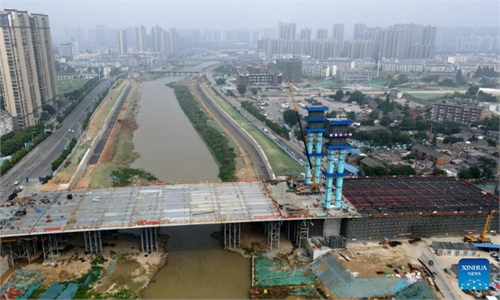
Passengers have their tickets checked at a railway station in Nantong, East China's Jiangsu Province on June 30, 2022. Photo: cnsphoto
Amid growing internal and external challenges and uncertainties, government leaders in China's Yangtze River Delta region are meeting in Shanghai on Tuesday and Wednesday to formulate and deploy new plans to propel high-quality integrated development of the region.
The region encompasses Shanghai and East China's Jiangsu, Zhejiang and Anhui provinces, and it is one of the nation's fast growing regions with good vitality, a high level of opening-up and innovation capacity.
Since the integrated development of the Yangtze River Delta was promoted to a national development strategy in November 2018, the proportion of the region's output in the national total has continued to rise.
Official data showed that the delta accounted for 23.94 percent of the country's GDP in 2019, increasing to 24.14 percent in 2021.
In spite of severe COVID-19 flare-ups in Shanghai and some surrounding cities during the spring, the region posted a swift revival in exports after the pandemic was tamed in June. According to the General Administration of Customs, the region's imports and exports totaled 1.39 trillion yuan ($204.82 billion) in June, up 14.9 percent year-on-year.
The growth rate was 0.6 percentage points higher than the national average, contributing to approximately 40 percent of the country's gross foreign trade.
By contrast, South China's Guangdong Province's foreign trade stood at 703.42 billion yuan in June, up 7.1 percent year-on-year. The province's share of the national total was 18.7 percent in the month, according to customs data.
Guangdong's import and export volume accounted for 40.9 percent of the national total in 1994, a record high.
The economic scale of the Yangtze River Delta region is larger than that of the Pearl River Delta region in Guangdong Province, and thanks to more integrated industrial and supply chains, the Yangtze Delta's resources and innovation are more balanced, Cao Heping, an economics professor at Peking University, told the Global Times on Tuesday.
"In addition, the Yangtze River Delta is more developed than the Pearl River Delta in terms of digital applications, which, along with rich talent reserves, and research and development, have contributed to the region's swift recovery this year after the epidemic was brought under control," Cao said.
He said the rise of ports in the Yangtze River Delta region, for instance, Ningbo port in Zhejiang Province and ports in the northern Bohai Bay, caused Guangdong's decrease in its foreign trade status. Cao said cities in the Pearl River Delta region such as Foshan and Dongguan have solid manufacturing base and still have an opportunity to catch up with the Yangtze River Delta region by shifting to high-end manufacturing.
Global Times


